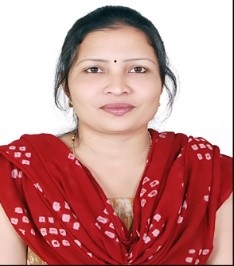Microgrid: A Pathway for Present and Future Technology
Written by Swetha Shekarappa G, Senbagavalli M, Sheila Mahapatra, and Saurav Raj
The "decentralization, decarbonization, and democratization" of the world's energy grids are currently being noted, often from the bottom up. Microgrids are gradually making their way from research labs and pilot demonstration sites into the growing economies, propelled by advancements in technology, declining costs, a successful track record, and expanding awareness of their advantages. They are utilized to control the installation of distributed renewable energies and to increase the dependability and resilience of electrical networks.
“A microgrid is a collection of interconnected loads and dispersed sources of energy that operates as a unified, performance contributes to the grid and is contained within well delineated electrical constraints. A microgrid can function in both grid-connected and offshore mode by connecting to and disconnecting from the grid” [1].
Three conditions are considered in the concept of a microgrid:
- The feasible to differentiate the portion of the distribution system that makes up a microgrid from the entire system.
- Resources associated with a microgrid are monitored cooperatively with one another rather than with remote resources.
- Microgrid can operate the ability linked to the greater grid or not.
The various microgrid characteristics which provide dynamic responsiveness unprecedented for an energy resource are:
- Generation and storage options: In order to lessen the effects of instabilities in power output and consumption, a buffer is required because the majority of microgrid-generating sources possess the inertia utilized by massive synchronous generators. The variety of energy storage solutions that are now being developed and may be used in microgrids. Although the emphasis is on electrical energy retention, it is also important to consider acceptable thermal and mechanical energy storage methods [2].
- Power Electronics: Microgrids frequently use power electronics converters like DC/AC or DC/AC/DC to interact with the power system, such as solar PV or microturbines.
- Controls and functionality: Microgrids have unique regulatory needs and techniques that help them achieve local balance and maximize their financial gains. Frequency and voltage control, also known as fundamental and supplementary control, can be carried out either decentralized or under the direction of a microgrid central controller that issues direct orders to the dispersed energy resources [3].
Motivation and Deployment of Microgrid
Resilience, socioeconomic advantages, and clean energy incorporation are the three main elements propelling the deployment and development of microgrids in areas with an existing electrical grid architecture. Although there has been much stated about the idea and potential of microgrids, there is also much to be learned from instances of actual, functioning microgrids. The reader is advised to study a recent review [4] for a full list of actual, empirical, and simulated microgrid systems. Although it would be impossible to list all possible microgrid uses here, we have highlighted a few in Figure 1.
Figure 1. Applications of Microgrid.
Challenges and Future Prospects
Governmental initiatives that encourage the establishment of microgrids based on renewables, many of which adapt to distributed applications, have also been prompted by the task to improve the resilience of power networks by maintaining continuity in supply and encouraging prosumers. Although the emphasis of this study is on microgrids in locations where centralized electrical networks already exist, it's vital to keep in mind that they also offer significant benefits to isolated and rural populations in underdeveloped countries. Below are a few of the difficulties:
- Interconnected policies
- Uncertain legal and regulatory
- Regulation in utility
- Regulation in opposition
Although it has been stated that microgrids offer a superior solution to address small-scale issues and may even pave the way for a future "self-healing" smart grid, it is feasible that humanity may eventually adopt "smart super grid"-style grid architectural paradigms [4]. To reduce bottlenecks, route power around flaws, and hasten breakdown recovery times, smart super grids rely on enhanced defect detection, segregation, and restoring abilities. Virtual power plants, which can also be grid-connected microgrids, use software and statistics to regulate globally scattered distributed energy resources. The market for voltage regulation in distribution systems with microgrids is one area of attention. According to some academics, each microgrid in a futuristic multi-microgrid network will function as a fictitious power plant. The capacity of microgrids to grow will probably be greatly influenced by novel economic models, like energy purchase or energy trading partnerships and design-build-own-operate-maintain.
Conclusion
Solar photovoltaic production and battery storage are becoming more and more affordable, and they are quickly approaching cost equality with conventional electricity sources. Due to the widespread deployment of these technologies, energy axioms end users import and export electricity might soon become the rule as opposed to the exception. It is the responsibility of the community to plan and determine what framework will best incorporate these and other distributed energy innovations before multitudes of distributed energy sources are interconnected to the power grid. By regulating supply and need regionally and also ensuring dependability and resilience against what look to be growing natural and man-made disruptions, microgrids are well positioned to handle this transformation.
References
- Ton DT, Smith MA. The US department of energy's microgrid initiative. Electr J 2012;25:84–94.
- Díaz-González F, Sumper A, Gomis-Bellmunt O, Villafáfila-Robles R. A review of energy storage technologies for wind power applications. Renew Sustain Energy Rev 2012;16:2154–71. http://dx.doi.org/10.1016/j.rser.2012.01.029.
- Kaur A, Kaushal J, Basak P. A review on microgrid central controller. Renew Sustain Energy Rev 2016;55:338–45. http://dx.doi.org/10.1016/j.rser.2015.10.141.
- DeBlasio D. Toward a self-healing smart grid. Fortnightly 〈https://www.fortnightly.com/fortnightly/2013/08/toward-self-healing-smart-grid〉 [Accessed 20 September 2016]; 2013.
This article was edited by Julio Usaola.
To view all articles in this issue, please go to May 2023 eNewsletter. For a downloadable copy, please visit the IEEE Smart Cities Resource Center.




To have the Bulletin delivered monthly to your inbox, join the IEEE Smart Grid Community.
Past Issues
To view archived articles, and issues, which deliver rich insight into the forces shaping the future of the smart grid. Older Bulletins (formerly eNewsletter) can be found here. To download full issues, visit the publications section of the IEEE Smart Grid Resource Center.





